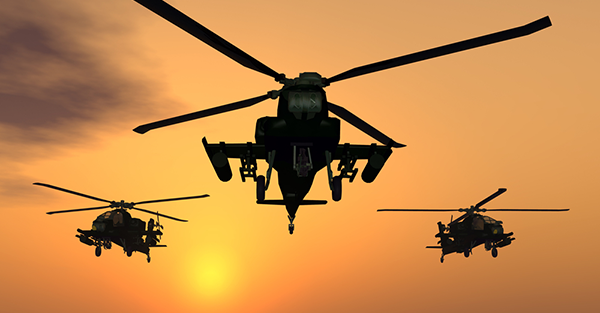
A friend who used to work in the Pentagon told me about the end of year budget meetings he had to attend. There, military personnel would frantically brainstorm ideas on how to spend the rest of their budgets. If they didn’t spend every cent, next year’s budget would be cut.
“Popcorn makers?” someone suggested. “Or perhaps some sort of group outings, to an event or a show.”
“Why don’t we return the extra money, since we clearly don’t need it,” my friend suggested.
The way he tells it, the tension in the room was palpable. Who was this asshole suggesting that they don’t use their entire budget?
I can’t remember what they decided to spend the money on. But they definitely used it. He said he would often come across unused equipment in the Pentagon that seemed out of place… and conclude that it must have been to eat up budget surpluses.
This anecdote shouldn’t be surprising. The military only seems to pinch pennies when it comes to taking caring of veterans who have sacrificed their physical and mental health for the Pentagon.
The Air Force spent $300,000 over the last few years on coffee mugs. But these aren’t just any coffee mugs. These attach to an airplane’s control panel, and keep the coffee hot! Soup too–they will keep soup hot as well. Quite versatile.
And each mug only costs $1,200. Which is strange, since I remember my dad getting a similar device for Christmas one year that plugged into the cigarette lighter in the car. And I can’t imagine my mom spending more than $29.95 on such a gift.
But sadly, these examples of waste are absolutely trivial compared to the overall waste in the Defense budget.
Defense spending hit $716 billion dollars last year. That’s four times larger than China’s and ten times Russia’s military budget.
And despite that, a new report suggests that the USA could lose a war with China and Russia. The report was compiled by the National Defense Strategy Commission, which was formed by Congress and includes former high ranking military officials.
The picture of the national security landscape that the 12-person commission sketched is a bleak one, in which an American military that has enjoyed undisputed dominance for decades is failing to receive the resources, innovation and prioritization its leaders need to outmuscle China and Russia in a race for military might reminiscent of the Cold War…
“The U.S. military could suffer unacceptably high casualties and loss of major capital assets in its next conflict. It might struggle to win, or perhaps lose, a war against China or Russia,” the report said. “The United States is particularly at risk of being overwhelmed should its military be forced to fight on two or more fronts simultaneously.”
The report’s recommendation: lift caps on military spending. Let the budget grow even higher.
Despite acknowledging that vast funds spent, massively outpacing rival nations, the commission still thinks that throwing more money at the military will solve the problem.
Perhaps we can buy off any attackers will free popcorn and warm in-flight coffee. Because at this point, culinary tools seem to be the US military’s biggest strength.
Failing to receive enough resources? Really?
According to David Vine’s book Base Nation: How U.S. Military Bases Abroad Harm America and the World, the US spends at least $156 billion annually just operating it’s 800 foreign bases dispersed around the world.
But has anyone assessed whether these bases still have a valid defense mission and if they are accomplishing that mission? America still has hundreds of bases in Germany, Japan, and South Korea. America likely has more bases in foreign countries than any other empire in history.
Vine claims that foreign bases only weaken America long-term, as they stir up tensions and anti-American sentiment in otherwise peaceful parts of the world. And that’s more than a fifth of the military budget right there.
But at least that money can be accounted for.
At least $6.5 TRILLION in Pentagon spending cannot be tracked. There are no receipts for what the money was spent on, or where it went. And this does not include the budget items they deliberately keep secret for black-ops.
Among the budget items that can be tracked are jaw-dropping price tags like $720 million on late fees for unreturned shipping containers, and $5 billion worth of unneeded warehoused spare parts.
But even the equipment they do use is vastly overpriced.
Orders for copies of the F-22 Raptor were reduced by 70 percent, but total acquisition costs decreased by only 14 percent. Per unit costs nearly tripled, from $139 million to $412 million per airplane.
The overall picture forming of the US military is of blundering incompetence. It is a large unaccountable bureaucracy. It has no incentives to spend less money, and countless pressures from defense contractors and their lobbyists to spend ever more.
Meanwhile, throwing more money at these problems is insane. Lack of funding is clearly not the problem. Increased funding could even invite more bad actors, scammers, and fraudsters into the fray. When you have that kind of cash to hand out, and no accountability, it creates a situation rife for corruption.
And the saddest part of all is the opportunity cost for American taxpayers.
We are talking about almost a quarter of the entire US budget here…
Imagine how strong the economy would be if that money stayed in the hands of the American people.
It wouldn’t be wasted on useless overpriced parts. It wouldn’t fatten the bank accounts of defense contractors.
It would be spent by families and individuals on whatever they most needed–better education for their kids, healthier food, fulfilling travel, investment, or just much needed saving for retirement.
Instead, the money is worse than wasted–it actually gives us a false sense of security and makes America less safe.
